5 Plants That Will Absorb Dangerous Airborne Chemicals
Everyone knows that growing plants inside your home can bring beauty, vitality, and life into any living space. Did you know that growing certain plants in your home can also have wonderful health benefits? Everyday household objects can release harmful gases into the air that we breath. These pollutants can have a serious effect on our health. Plants are able to breathe in bad air and turn dangerous toxins into harmless substances.
Poor air quality from pollution, odors, molds, and chemicals can impact your breathing which can have a variety of negative effects on your health. These five plants have purifying benefits that help promote relaxation, which can lead to healthier sleeping patterns and all around better days.
A healthy home has approximately 1 houseplant per 100 square feet. It is a good idea to have more plants per square feet if you live with multiple people or pets.
Widget not in any sidebars
1. Aloe Vera
Aloe vera is well known for soothing inflammation, scars, and burned skin. It is also among the most powerful 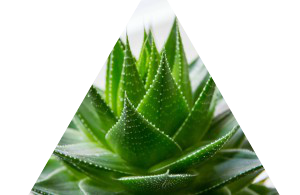 plant air purifiers in the world. While Aloe vera helps clear chemicals like formaldehyde and benzene from the air, it also lowers carbon dioxide levels at night. This rare ability to absorb CO2 levels in the dark makes Aloe a wonderful bedroom companion that can help you get a more refreshing sleep.
plant air purifiers in the world. While Aloe vera helps clear chemicals like formaldehyde and benzene from the air, it also lowers carbon dioxide levels at night. This rare ability to absorb CO2 levels in the dark makes Aloe a wonderful bedroom companion that can help you get a more refreshing sleep.
Aloe vera is very easy to care for, needing minimum water and attention. The Egyptians called it the ‘plant of immortality’ because it is so resilient. It is important to keep it in direct sunlight.
2. Snake Plant (Mother-in-Law’s Tongue)
 NASA conducted a study about houseplants and air purification. The study shows that the snak
NASA conducted a study about houseplants and air purification. The study shows that the snak
e plant can reduce respiratory symptoms, eye irritation, and headaches, while also reducing the need for ventilation.
During the study, NASA sealed a snake plant in a chamber with various noxious gases for 24 hours and found that it reduced the amount of Benzene in the air by 53% and the amount of Trichloroethylene in the air by 13.4%.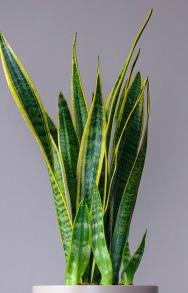
Snake plant is also a great bedroom companion because it can provide a significant amount of oxygen to indoor environments at night.
Snake plant can be neglected for periods of time because it is a sturdy plant. It will thrive in the sun or
shade, but should not be kept in an environment below 50 degrees Fahrenheit.
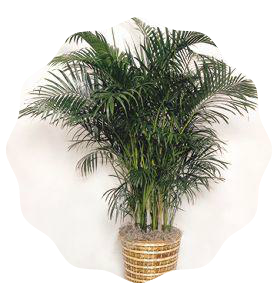 3. Areca Palm
3. Areca Palm
The Areca palm is a very popular office and household dweller. It’s popularity grew when it scored very high in all
categories when NASA tested 50 plants for their ability to filter the air around us, ease of care, and the ability to add moisture to the surrounding atmosphere. It can purify benzene, formaldehyde, and trichloroethylene from the air. It is also a very effective air humidifier.
Areca palms prefer bright sunlight but too much light can scorch the leaves. It is important to not overwater these plants and they do best in moderate temperatures.
4. English Ivy
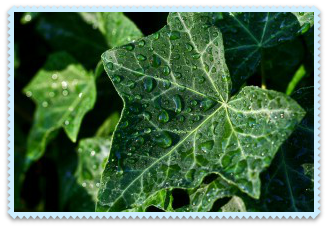 A NASA study concluded that English Ivy is the number one best air purifying houseplant because it is the most efficient plant to absorb formaldehyde. Its leaves can improve symptoms of allergies and asthma. The American College of Allergy, Asthma & Immunology reported that, in a 2005 experiment, English Ivy removed 94% of airborne feces and 78% of airborne mold in as little as 12 hours.
A NASA study concluded that English Ivy is the number one best air purifying houseplant because it is the most efficient plant to absorb formaldehyde. Its leaves can improve symptoms of allergies and asthma. The American College of Allergy, Asthma & Immunology reported that, in a 2005 experiment, English Ivy removed 94% of airborne feces and 78% of airborne mold in as little as 12 hours.
English Ivy is easy to grow and survives in moderate temperatures with medium sun exposure. The vine looks great in a hanging basket or on a ledge where the leaves can trail down.
This plant can be toxic is ingested by kids or pets so make sure to keep it out of their reach.
5. Chrysanthemum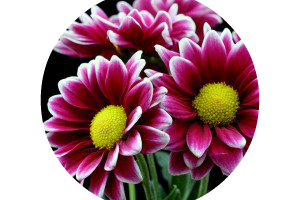
This colorful plant can brighten any room or office. Its blossoms can also filter out benzene, which is commonlyfound in glue, paint, plastics, and detergent.
The name “Chrysanthemum” is derived from the Greek words “gold” and “flower”. The flower also has many medicinal benefits. It can be used to treat chest pain, high blood pressure, type 2 diabetes, fever, cold, headache, dizziness, and swelling. When combined with other herbs, it can also be used to treat prostate cancer. Chrysanthemum tea is a very popular summertime beverage in areas of southern China.
Chrysanthemums need bright sunlight to flourish indoors. It is important to find an area that gets sun even in the winter. Water the plant often, keeping the soil damp at all times.
Natural and Non-Toxic Products. Up to 50% Off – Every Day (Ad)
Top Image Credit: Ivy Photo by mongo gushi on Flickr under CC2 Licence
Image Credits:
Andreas Issleib/flickr
Desire Van Meulder/flickr
Boesen Florist/flickr
Cathy/flickr
Chris C/flickr
Ariana Marisol is a contributing staff writer for REALfarmacy.com, where this article first appeared. She is an avid nature enthusiast, gardener, photographer, writer, hiker, dreamer, and lover of all things sustainable, wild, and free.
Ariana strives to bring people closer to their true source, Mother Nature. She is currently finishing her last year at The Evergreen State College getting her undergraduate degree in Sustainable Design and Environmental Science. Follow her adventures on Instagram.


